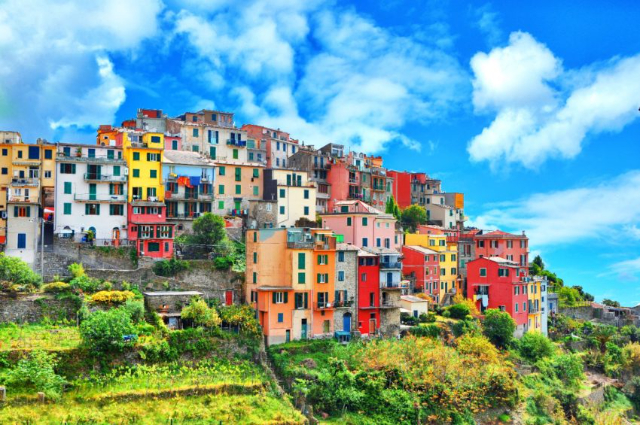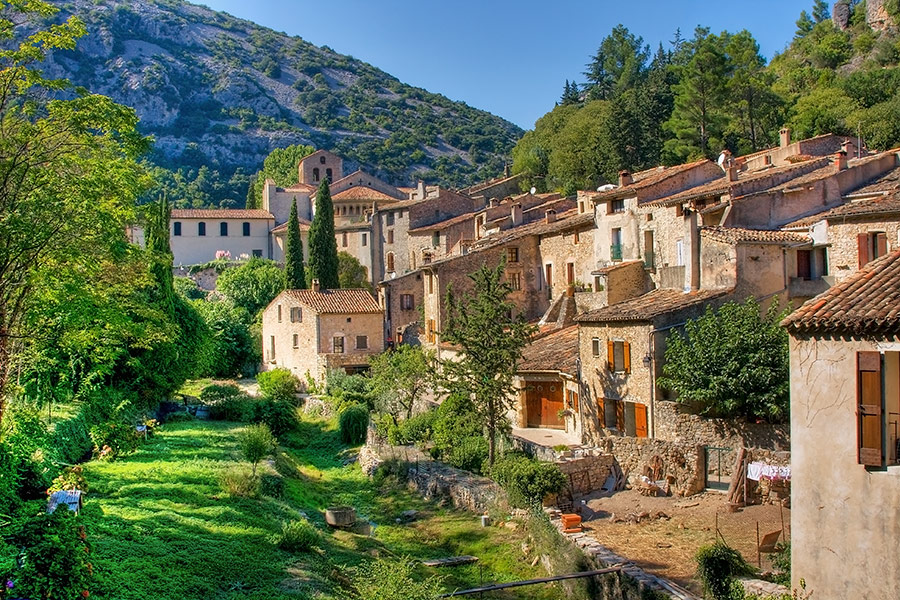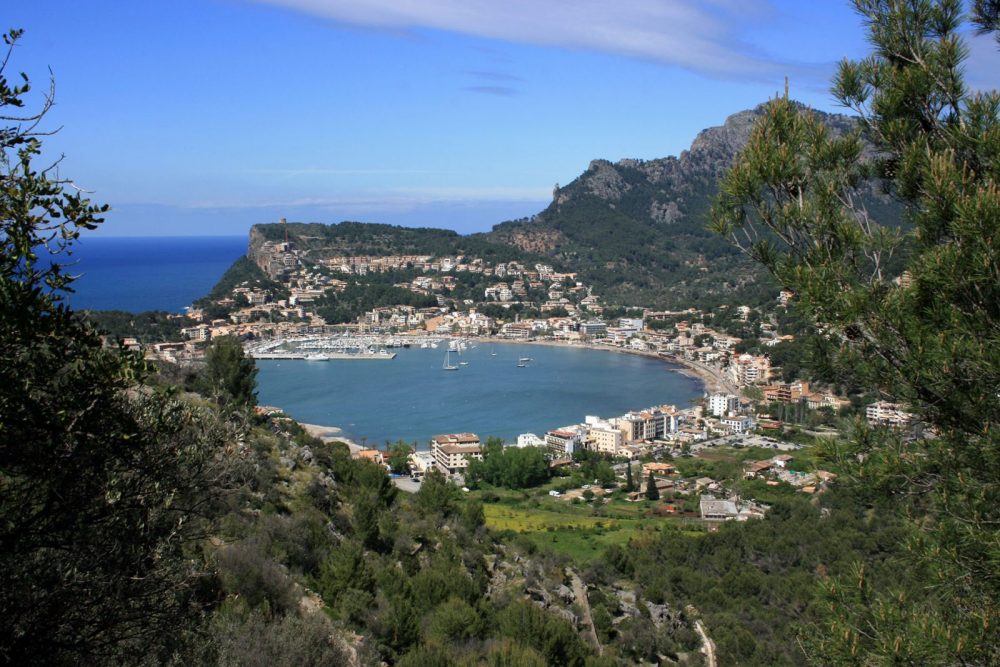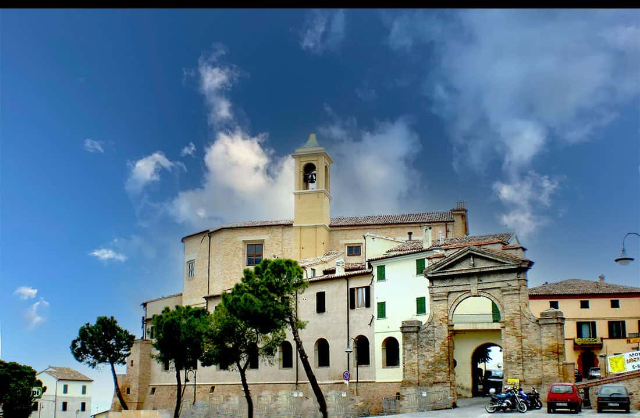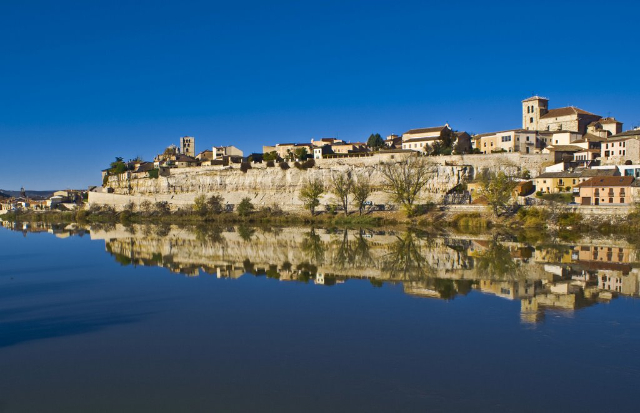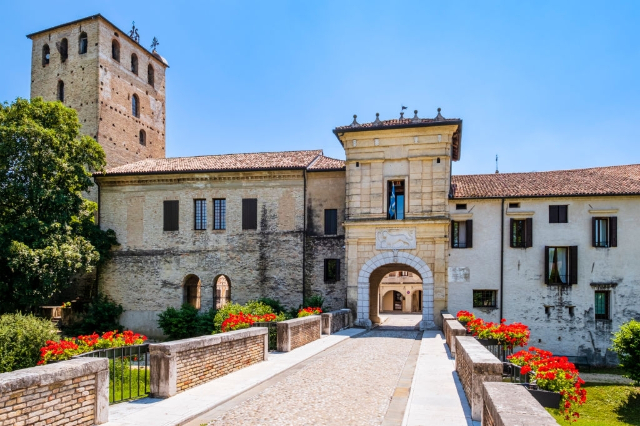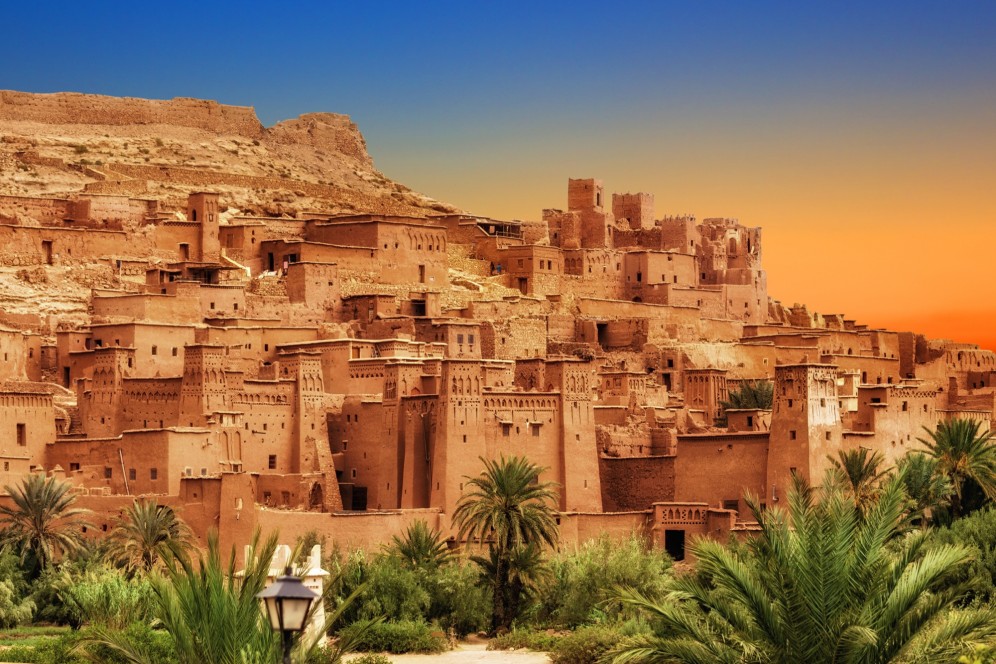Corniglia, unlike the other villages, sits atop a promontory about 90 meters above sea level and, for this reason, is the only village in the Cinque Terre that does not have a marina. To reach it, one must climb the Lardarina, a long brick staircase consisting of 33 ramps and 377 steps that descends from the village to the train station and the sea. Alternatively, there is a bus service between the station and the village (included in the Cinque Terre Card).Its architecture distinguishes it from other villages. Once the residence of the noble Genoese Fieschi family, Corniglia has lower houses, similar to those inland, reflecting its more agricultural than maritime vocation. Since Roman times, Corniglia has exploited the vineyards and terraces that still surround the village for the production of a renowned white wine. During excavations in Pompeii, several wine amphorae were found bearing the name Cornelia, testifying to its winemaking tradition.The village’s most important monument is the Church of St. Peter, built around 1350 in Ligurian Gothic style. It is embellished with a white Carrara marble rose window on the façade and features a 12th-century baptismal font, statues of the evangelists, and numerous decorations, including a bas-relief depicting a deer, the symbol of the village.The heart of the village is the spacious Taragio Square, the small main square that offers a spectacular view of the sea and is also known as "the terrace." It is dominated by the Oratorio dei Disciplinati, dating from the 18th century. From here, a long flight of steps leads to Corniglia’s small marina, composed only of rocks. For those who prefer a beach, there is the beautiful Guvano beach, with a combination of sand and pebbles, which can be reached on foot in 15 minutes through an old disused railway tunnel.
